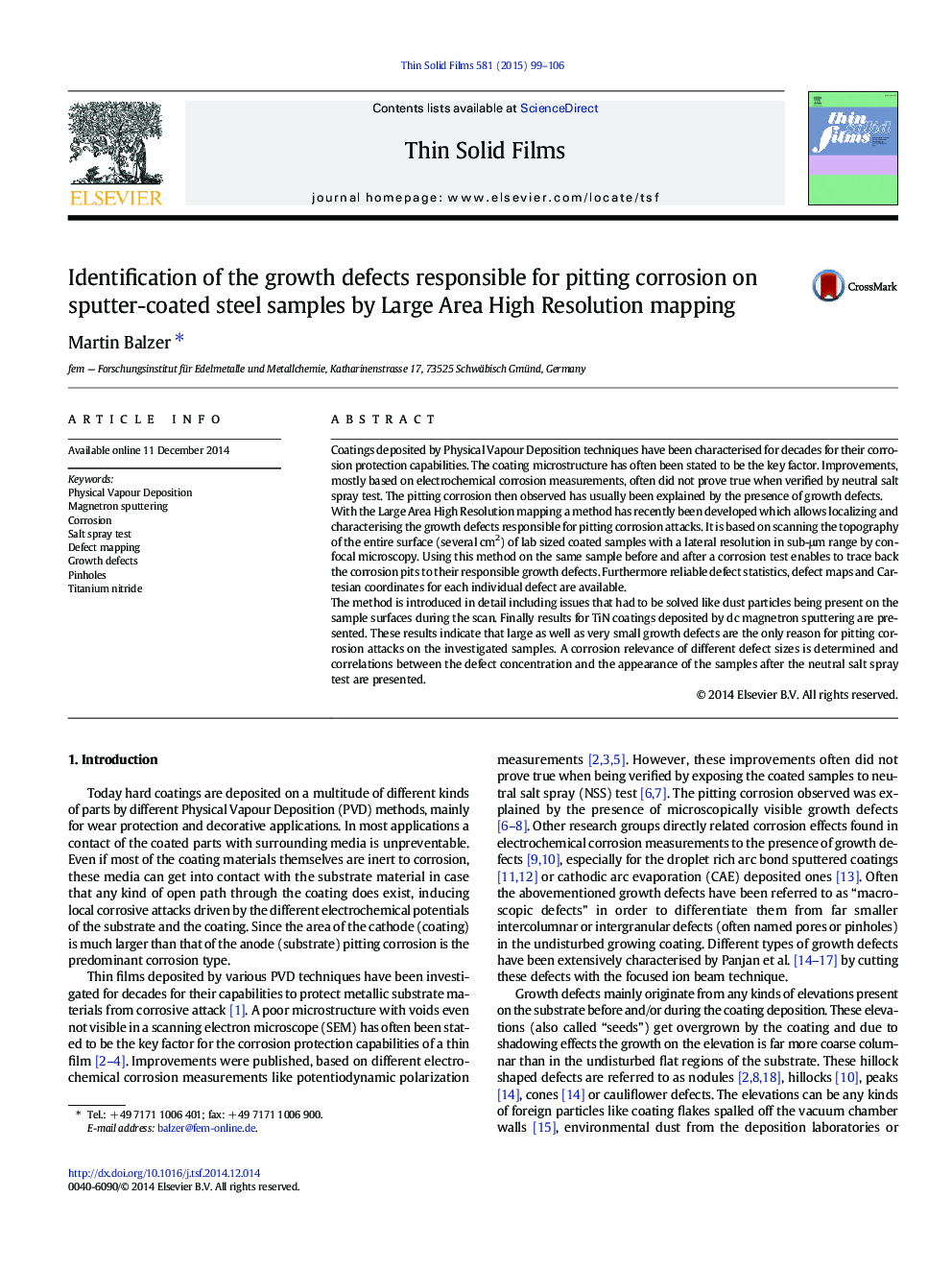| Article ID | Journal | Published Year | Pages | File Type |
|---|---|---|---|---|
| 1664807 | Thin Solid Films | 2015 | 8 Pages |
•Reliable growth defect number measurable for several cm2 substrate surface•Very different defect concentrations found on samples from same deposition batch•Prove that all corrosion pits on TiN coated steel were caused by growth defects•Corrosion probability for certain kinds and sizes of growth defects determined•Correlation between corrosion behaviour and growth defect concentration revealed
Coatings deposited by Physical Vapour Deposition techniques have been characterised for decades for their corrosion protection capabilities. The coating microstructure has often been stated to be the key factor. Improvements, mostly based on electrochemical corrosion measurements, often did not prove true when verified by neutral salt spray test. The pitting corrosion then observed has usually been explained by the presence of growth defects.With the Large Area High Resolution mapping a method has recently been developed which allows localizing and characterising the growth defects responsible for pitting corrosion attacks. It is based on scanning the topography of the entire surface (several cm2) of lab sized coated samples with a lateral resolution in sub-μm range by confocal microscopy. Using this method on the same sample before and after a corrosion test enables to trace back the corrosion pits to their responsible growth defects. Furthermore reliable defect statistics, defect maps and Cartesian coordinates for each individual defect are available.The method is introduced in detail including issues that had to be solved like dust particles being present on the sample surfaces during the scan. Finally results for TiN coatings deposited by dc magnetron sputtering are presented. These results indicate that large as well as very small growth defects are the only reason for pitting corrosion attacks on the investigated samples. A corrosion relevance of different defect sizes is determined and correlations between the defect concentration and the appearance of the samples after the neutral salt spray test are presented.
